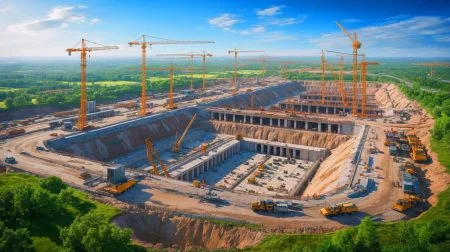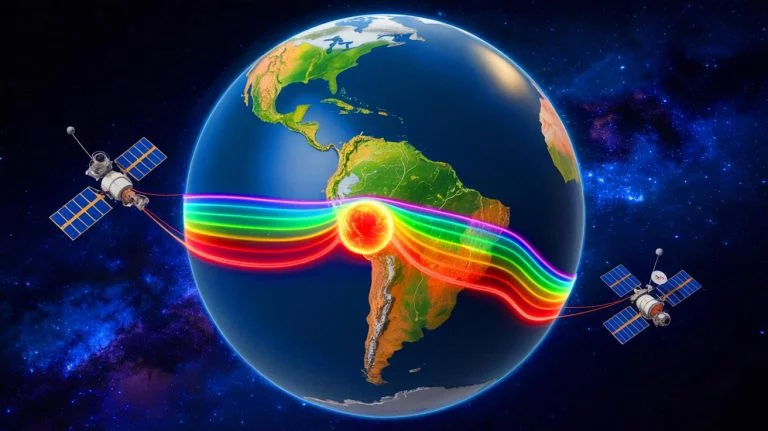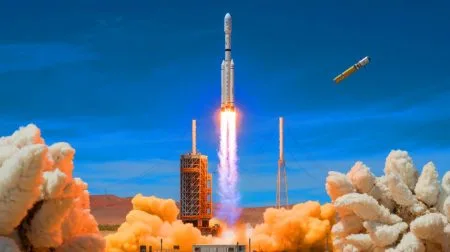| IN A NUTSHELL |
|
The South Atlantic Anomaly (SAA) is a region of weakened magnetic field stretching over South America and the South Atlantic Ocean, posing significant challenges to space technology and scientific research. This anomaly has drawn the attention of NASA and the global scientific community due to its potential impact on satellite operations and the insights it offers into Earth’s magnetic dynamics. As the anomaly evolves, understanding its mechanisms is crucial to mitigating risks to technological infrastructure and advancing our knowledge of Earth’s internal processes.
Deep Origins and Complex Mechanisms
The South Atlantic Anomaly (SAA) stands as a significant geomagnetic phenomenon, captivating scientists with its complex origins and potential implications. Characterized by a substantial reduction in magnetic intensity, the SAA disrupts the otherwise protective magnetic shield of Earth, allowing high-energy solar particles to approach closer to the surface. This magnetic weakness is intricately linked to the geodynamo, a process within Earth’s outer core where molten iron and nickel movements generate the planet’s magnetic field.
The formation of the SAA is influenced by the tilt of Earth’s magnetic axis relative to its rotational axis, as well as the presence of the African Large Low Shear Velocity Province, a massive dense structure beneath the African continent. These factors contribute to a local polarity reversal, weakening the dipole field intensity in the vicinity of the SAA. Understanding these mechanisms is crucial for predicting the anomaly’s evolution and its broader implications for Earth’s magnetic field.
A Threat to Space Technology
The South Atlantic Anomaly poses significant risks to space technology, particularly satellites traversing the affected region. Exposure to high levels of energetic protons can lead to single event upsets (SEUs), causing temporary malfunctions, data corruption, or even permanent damage to critical systems. To mitigate these risks, satellite operators often implement preventive measures, such as shutting down non-essential systems when passing through the anomaly.
The International Space Station (ISS), which orbits through the SAA, has reported occasional “glitches” and resets, resulting in data loss. While the ISS’s shielding protects astronauts, external instruments remain vulnerable. Other missions, like the Ionospheric Connection Explorer (ICON), closely monitor the SAA to adjust their operations and minimize disruptions. As the anomaly continues to evolve, safeguarding space technology remains a pressing challenge for the scientific community.
Dynamic Evolution and Challenges
The South Atlantic Anomaly is not a static phenomenon. Recent data from the ESA’s Swarm constellation and NASA’s SAMPEX mission reveal troubling trends. The anomaly is gradually drifting northwest, expanding in surface area, and, since 2020, beginning to split into two distinct lobes. This bifurcation increases the number of hazardous zones for spacecraft, complicating the task of scientists developing predictive models of geomagnetic conditions.
Understanding the changing morphology of the SAA is crucial for ensuring the safety of current and future satellites. As the anomaly evolves, continuous monitoring and adaptation in satellite operations are necessary to mitigate potential disruptions. These developments underscore the importance of ongoing research and international collaboration to address the challenges posed by the SAA.
Anticipating the Invisible
To enhance understanding and predictions of the South Atlantic Anomaly, NASA combines satellite data with simulations of Earth’s core dynamics. These inputs contribute to global models like the International Geomagnetic Reference Field (IGRF), which track the evolution of Earth’s magnetic field. These models are essential for planning space missions and gaining insights into the planet’s internal structure.
While the current evolution of the SAA is unprecedented in the space era, geological records suggest that such anomalies are not exceptional over long timescales. Importantly, scientists assert that the current SAA is not an early indicator of a magnetic pole reversal, a natural phenomenon occurring over hundreds of thousands of years. Studying the SAA remains a vital research area, crucial for protecting orbiting technologies and deepening our understanding of Earth’s magnetic dynamics.
As the South Atlantic Anomaly continues to evolve, it poses intriguing questions about the future of Earth’s magnetic dynamics and the potential impact on our technological and scientific pursuits. How will ongoing changes in the SAA shape our understanding of Earth’s magnetic field and influence our ability to safeguard space technology in the coming years?
Did you like it? 4.4/5 (25)








This sounds like something out of a movie! Are we really in danger, or is it just scientific speculation? 🎥🌍
Can the South Atlantic Anomaly affect our daily technology like smartphones and GPS? 🤔
Why do these anomalies seem to happen more frequently nowadays? Is it linked to climate change?
The article is fascinating, but I’d love more visuals to understand the SAA better. Thank you!
Wait, does this mean our compasses might start pointing the wrong way? 😱
I’m not surprised. Earth’s magnetic field has always been mysterious. Great read!
This is terrifying! Is there anything we can do to stop these “unknown forces” from causing a disaster?
Sounds like a natural phenomenon. Why the panic? Science will figure it out as always.
So, how often do these magnetic anomalies occur, and are they becoming more frequent?